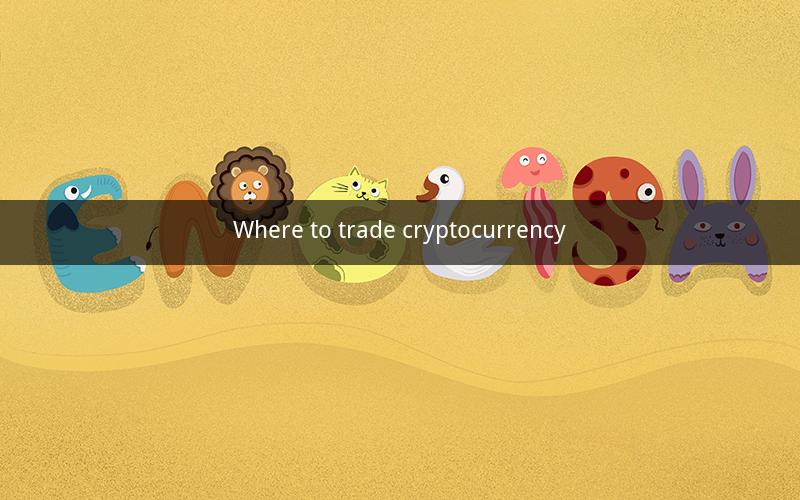
Directory
1. Understanding Cryptocurrency Trading
2. Choosing a Cryptocurrency Exchange
3. Account Setup and Verification
4. Depositing and Withdrawing Funds
5. Understanding Order Types
6. Market Orders vs. Limit Orders
7. Advanced Trading Strategies
8. Risk Management
9. Keeping Your Cryptocurrency Safe
10. Future Trends in Cryptocurrency Trading
1. Understanding Cryptocurrency Trading
Cryptocurrency trading involves buying, selling, and exchanging digital currencies like Bitcoin, Ethereum, and Litecoin. It's a decentralized and often volatile market that offers high returns but also carries significant risks. Before diving into the world of cryptocurrency trading, it's essential to understand the basics, including the types of cryptocurrencies, their market value, and the factors that affect their prices.
2. Choosing a Cryptocurrency Exchange
Selecting the right cryptocurrency exchange is crucial for a smooth trading experience. When choosing an exchange, consider factors such as fees, security measures, available cryptocurrencies, user interface, and customer support. Some popular exchanges include Coinbase, Binance, Kraken, and Bitstamp.
3. Account Setup and Verification
To start trading, you'll need to create an account on a cryptocurrency exchange. This process typically involves providing your name, email address, and phone number. Depending on the exchange, you may also need to verify your identity by providing a government-issued ID and proof of address.
4. Depositing and Withdrawing Funds
Once your account is verified, you can deposit funds into your exchange wallet. You can deposit fiat currency (traditional currency) or cryptocurrencies. Withdrawals can be made by transferring funds back to your bank account or to another cryptocurrency wallet.
5. Understanding Order Types
Cryptocurrency trading involves placing orders to buy or sell cryptocurrencies. There are various order types, including market orders, limit orders, stop orders, and stop-limit orders. Each type has its own advantages and disadvantages, and understanding them can help you make informed trading decisions.
6. Market Orders vs. Limit Orders
Market orders are executed immediately at the current market price, while limit orders allow you to set a specific price at which you want to buy or sell a cryptocurrency. Market orders are suitable for rapid transactions, while limit orders can help you secure a better price or avoid slippage.
7. Advanced Trading Strategies
Advanced trading strategies can help you capitalize on market trends and increase your chances of success. Some popular strategies include day trading, swing trading, scalping, and position trading. Each strategy requires a different approach and level of expertise.
8. Risk Management
Risk management is essential for long-term success in cryptocurrency trading. Implementing strategies such as diversifying your portfolio, setting stop-loss orders, and not investing more than you can afford to lose can help protect your investments.
9. Keeping Your Cryptocurrency Safe
Security is a top priority when trading cryptocurrencies. Store your cryptocurrencies in secure wallets, such as hardware wallets or cold storage solutions, and use strong passwords and two-factor authentication for your exchange account. Keep your private keys safe and avoid sharing them with anyone.
10. Future Trends in Cryptocurrency Trading
The cryptocurrency market is continuously evolving, with new technologies and regulations shaping the future of trading. Staying informed about the latest trends, such as DeFi, NFTs, and blockchain-based solutions, can help you make informed decisions and adapt to the changing landscape.
---
Questions and Answers
1. What is the difference between a centralized and decentralized exchange?
- Centralized exchanges are owned and operated by a single entity, while decentralized exchanges are powered by blockchain technology and operate without a central authority.
2. How do I know if a cryptocurrency exchange is trustworthy?
- Research the exchange's reputation, security measures, and regulatory compliance. Look for customer reviews and ratings online.
3. What is slippage in cryptocurrency trading?
- Slippage occurs when the price of a cryptocurrency moves against the trader's position between the time the order is placed and executed.
4. How can I avoid losing my cryptocurrency private keys?
- Store your private keys in a secure, offline location, such as a hardware wallet or cold storage solution. Avoid sharing your private keys with anyone.
5. What is a margin trading in cryptocurrency?
- Margin trading allows traders to borrow funds from a broker to increase their position size, potentially leading to higher profits but also higher risks.
6. How do I calculate my cryptocurrency trading fees?
- Trading fees vary by exchange and are typically based on the amount of cryptocurrency traded. Check the exchange's fee schedule for specific details.
7. What is the difference between a hot wallet and a cold wallet?
- Hot wallets are online and accessible from anywhere, while cold wallets are offline and provide greater security against hacking and theft.
8. How can I stay updated on cryptocurrency market trends?
- Follow reputable cryptocurrency news websites, join online forums, and subscribe to newsletters to stay informed about the latest developments.
9. What is a liquidity pool in DeFi?
- A liquidity pool is a collection of cryptocurrency assets locked in a smart contract that can be used for decentralized trading, lending, and borrowing.
10. How can I diversify my cryptocurrency portfolio?
- Diversify your portfolio by investing in different types of cryptocurrencies, including major coins, altcoins, and tokens from various sectors of the market.